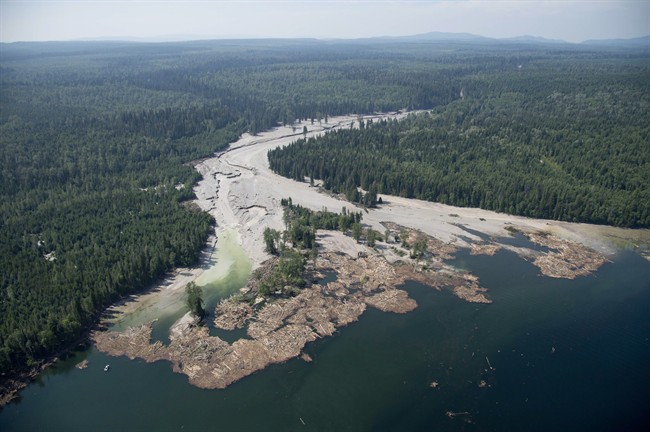VICTORIA – A mining organization representing British Columbia’s First Nations says companies should bankroll an emergency fund to cover the cost of potential mine disasters similar to last summer’s Mount Polley tailings dam collapse.

However, an industry spokeswoman says mine owners are already required by law to pay disaster and cleanup costs.
The B.C. First Nations Energy and Mining Council released a report Wednesday saying mining operations threaten more than 230 northern aboriginal and non-aboriginal communities and even the drinking water in Prince George, Terrace and Smithers.
Thirty-five tailings ponds at 26 mines and in 48 watersheds could also impact nearly 8,700 kilometres of fish-bearing waters, said the report by the North Vancouver-based council.
Dave Porter, the council’s chief executive officer, said First Nations analyzed and surveyed mine tailings ponds following last year’s Mount Polley mine disaster near Likely, in central B.C.
Porter said the report calls for improved emergency measures, which should involve companies funding a response team during a mining catastrophe.
“Any mining company that operates in B.C. should be required to post funding contributions to the establishment of a super fund,” he said, adding it should be more than $200 million.
Mining Association of BC president Karina Brino said mining laws in the province require companies to post bonds and securities to cover reclamation and emergency costs. Mine owners are also liable for their properties, she said.
“You need to demonstrate to the government that you are going to be able to respond, financially, if there is an issue at your site,” Brino said.
Porter said the report is not anti-mining.
“Absolutely not. That’s not the position of our organization. We’re not saying ‘No’ to mining. What we’re saying is we’ve got to mine better.”
Porter said the report should serve as a resource to help communities understand the risks associated with tailings dams.
“It is not intended to imply that all of the tailings facilities analyzed will at some point fail,” the report said. “Rather, it is meant to provide a comprehensive summary of potential threats from future tailings facility failures in northern B.C.”
An independent, government-ordered report concluded in January that an inadequately designed dam caused 24 million cubic metres of silt and water to spill into nearby lakes and rivers from the Mount Polley open-pit, copper and gold mine owned by Imperial Metals Corp. (TSX:III),
The report found the dam didn’t account for drainage and erosion failures associated with glacial till beneath the pond.
Al Hoffman, B.C.’s chief inspector of mines, said the government is committed to implementing the recommendations of the independent panel report.
Hoffman said in a statement that he has already required B.C.’s operating mines to provide letters by June 30 confirming the structure of their tailings ponds, including understanding of their strength.
B.C. is also moving to establish independent tailings dam review boards.



Comments